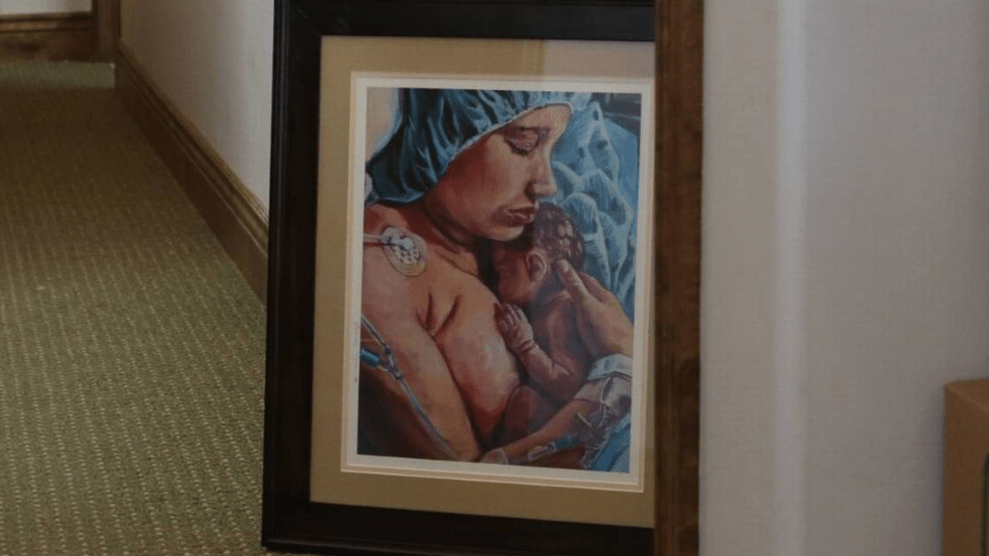
Image: Gary Baseman
Several years ago, I went to a conference co-sponsored by the insurance industry and Greenpeace. This improbable congregation of Brooks Brothers and Birkenstocks came about because Greenpeace wanted to enlist the industry in its campaign against global warming, figuring that insurance companies would have an interest in doing what they could to prevent the disasters we inflict on nature, and those nature inflicts on us. No doubt, the insurance industry’s influence would be a useful counterweight to the oil and auto lobbies in Washington.
But there was no real conversation. The enviros wanted to talk atmospheric science and solar energy, and the financiers wanted to talk tighter building codes and a fairly new financial tool they’d invented called catastrophe bonds.
Given Wall Street’s ability to turn almost anything into a commodity, perhaps it’s not surprising that many there see a financial solution to–or perhaps at least an opportunity in–the nastier storms that seem to be coming along with global climate change: catastrophe bonds and catastrophe options, or “cats” for short. The impetus for this school of financial engineering was Hurricane Andrew, which hit Florida in August 1992. While the storm killed only 43 people, it damaged lots of property, including more than 86,000 single-family homes, costing the insurance industry about $16 billion. A dozen small insurers were wiped out, and State Farm Fire & Casualty was saved only by a bailout from its rich parent, State Farm Mutual. Had Andrew hit the beach a little farther north, it could have destroyed a good bit of Miami, and with it, lots more insurance companies.
What alarms the insurers about Andrew–and what would alarm most people–is that the 1992 hurricane may be just the beginning of a long-term increase in the number of hurricanes hitting the United States. William Gray, a professor of atmospheric science at Colorado State University, theorizes that hurricane frequency is on the rise, with the 1990s marking an upswing following the relatively placid ’70s and ’80s. Gray predicts that we are “entering an era that will see many decades of increased hurricane activity and that will include particularly intense or major hurricanes. “More unpleasant, a number of atmospheric scientists suspect that global warming will induce even more frequent and destructive storms than even Gray’s forecast allows for.
During the two-decade lull in major storms prior to the ’90s, the population of such hurricane-prone states as Texas and Florida zoomed: Between 1970 and Andrew’s landfall in 1992, the population of Texas grew by 58 percent, and Florida’s nearly doubled. The value of property insured in those states today stands at about $3.7 trillion.
If the weather forecasters are right, no mere piece of the rock will shield us from the coming storm. The U.S. insurance industry has about $240 billion in “surplus,” industry jargon for its cash cushion. So, a few more Andrews, or one Andrew bearing down on Miami, in the words of the trade journal Risk Management, “could create a significant disruption, if not complete collapse, of the insurance industry as we know it.” While it may be hard to work up much sympathy for the demise of the insurance industry as we know it, consider the client side of the equation: A reported $400 million in claims went unpaid when Andrew drove a dozen insurers out of business. A larger catastrophe could result in billions in unpaid claims.
Faced with a corporate disaster in the wake of a potential natural one, the insurance companies decided not to jack up the rates in hurricane- and earthquake-prone areas (politicians and regulators might not approve). Rather, they found a way to pass their risk along to someone–or something–else: the U.S. financial market. Its $67 trillion in assets could absorb a dozen Andrews and hardly notice, or so the more creative minds of the insurance business thought when they dreamed up the idea of packaging their risks into bonds. Now those bonds are bought and sold just like more traditional financial products.
The companies that sell catastrophe bonds tempt investors by offering high yields should disaster not strike, with the risk of losing lots of money if it does. Take, for example, the two sets of cat bonds issued in June 1997 by Residential Reinsurance, USAA’s reinsurer. With one set, the interest will be reduced, to zero if necessary, if claims resulting from hurricanes exceed $1 billion, though the principal will still be guaranteed; with the second, the interest and principal are both at risk. For taking on the risks of the first set, investors enjoy an interest rate 2.73 percentage points above market rates prevailing on the date of issue; for the second, the premium is 5.76 points. The buyers were betting that the higher interest rates would offset the hurricane damage claims. Residential was betting that the high interest rates were worth the expense, since it would have up to hundreds of millions more dollars through the bond purchases, money it could use to pay off storm claims and a windfall it wouldn’t have had otherwise.
One quibble with the solution cat bonds offer is that no one really knows how to price them. Are those 2.73- and 5.76-point premiums “fair” to both sides? Do they adequately represent the potential mix of risk and reward, or is one side making out like a bandit? No one knows. With conventional financial relationships, you can make educated guesses about these things. People who buy bonds for a living, for example, have a pretty good idea of the financial health of the companies issuing them. People who trade options have good models for pricing them. But how do you account for a risk like a hurricane or an earthquake? Hurricanes are somewhat more predictable than earthquakes, but if we’re entering a long period of nastier, more frequent storms, then, as they say in the mutual fund industry, past performance is no guarantee of future results.
The buyers and sellers of cat bonds think they know what the right pricing is–at least, each claims to. All the participants have their own pricing models, many of which do not agree with one another.
When I asked if the industry had really gotten its head around the pricing issue, Morton Lane, partner in a Chicago cat house, said that he has, even if some of his colleagues haven’t. No doubt he isn’t alone in that conviction. It may also be, as Ozone Action executive director John Passacantando points out, that the insurers and reinsurers have a better sense of the risks of global warming than do portfolio managers and other speculative sorts who can’t see beyond the high yields. In selling the bonds, he surmises, they’ll incant soothing bromides about once-in-a-century storm risks, knowing in their pricing models that those centuries shorten considerably as the climate warms. Passacantando is no starry-eyed tree-hugger; he used to hawk supply-side guru Jude Wanniski’s research to Wall Street, and he knows how financiers operate.
So what? There are a few risks, but maybe cat bonds are also one of those proverbial win-win-win situations loved by optimists. Homeowners will be able to get insurance, insurance companies will limit their exposure to catastrophe, and speculators can have their thrills. And should things turn out badly, a few speculators might lose their shirts. Were that to happen, the market for cat bonds would probably dry up, and the insurers would have to go searching elsewhere for funds.
But the real risks of cat bonds are more subtle. Insurers often worry about the moral dilemmas associated with their trade: For instance, once insured, people sometimes feel emboldened to take risks they wouldn’t have dared if they were not covered.
Maybe insurance on houses at great risk of washing away should be devilishly expensive. And maybe clever financial instruments could promote political complacency about the broader risks of climatic catastrophe. There’s already a rampant tendency to impute great powers of wisdom and foresight to the invisible hand, and capitalizing nature would bring this to a new level. Whatever the financial effects, the language of risk management may anesthetize us to what is not the loss of money or property, but the gradual relinquishment of any connection at all to the real world around us. If the planet’s increasing tendency toward tempest is nature’s way of telling us something, surely it isn’t “Buy low and sell high.”










